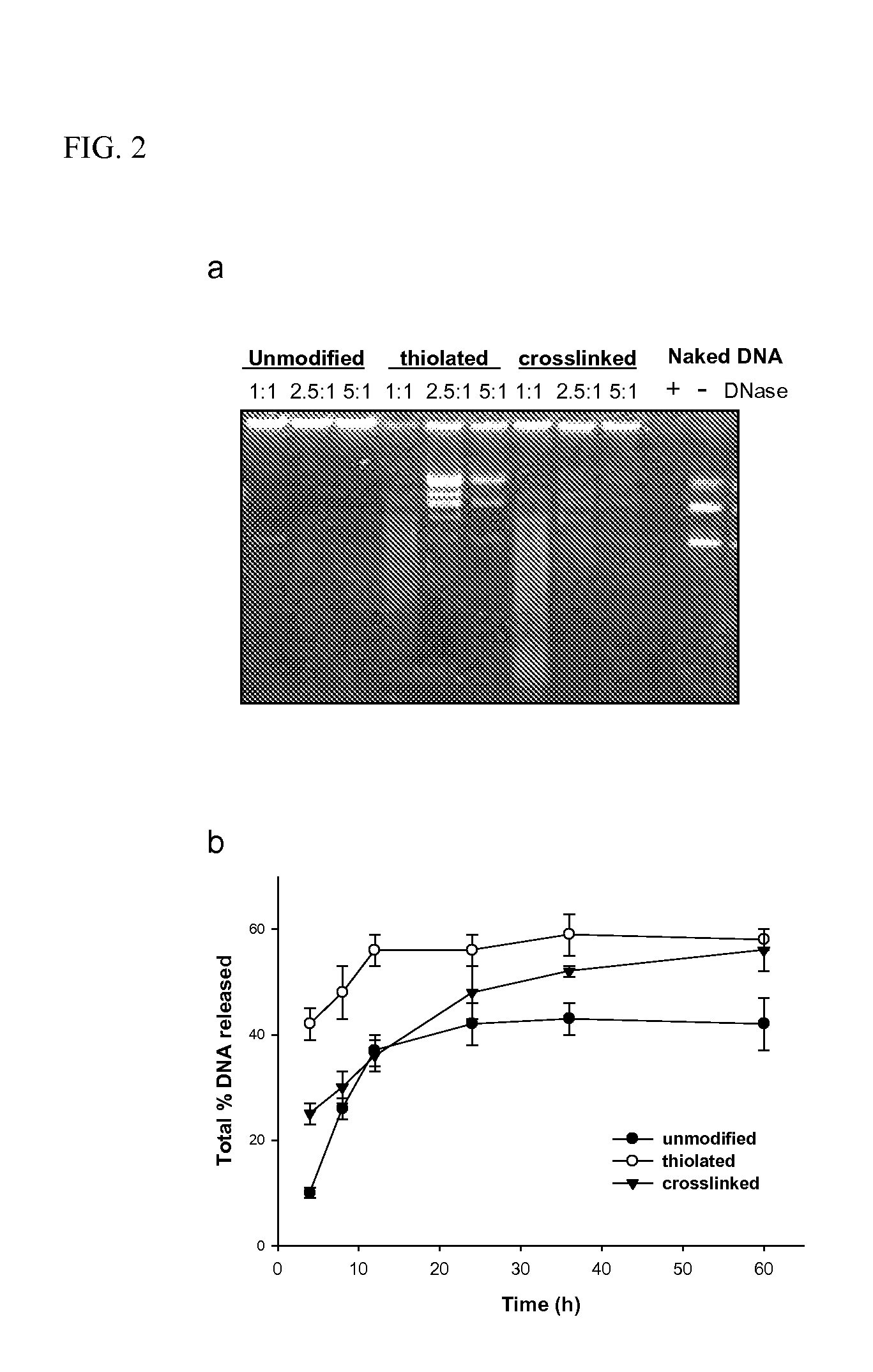Controlled and Sustained Gene Transfer Mediated by Thiol-Modified Polymers
a technology of thiolmodified polymers and gene delivery systems, applied in the direction of biocide, capsule delivery, genetic material ingredients, etc., can solve the problems of low transfection efficiency, physical instability of polyplexes with low transfection efficiency, and limited use of virus-based gene therapy
- Summary
- Abstract
- Description
- Claims
- Application Information
AI Technical Summary
Benefits of technology
Problems solved by technology
Method used
Image
Examples
Embodiment Construction
[0022] Nanoparticles of chitosan, a natural biodegradable polymer, have been investigated for gene delivery. However, the utility of high molecular weight chitosan has been limited by its low water solubility under physiological conditions, aggregation, high viscosity at concentrations used for in vivo delivery and low transfection efficiency. Herein we report on a highly effective gene delivery system utilizing a 33 kDa thiol-modified chitosan derivative. Thiolation of chitosan resulted in reduced density of positive charges and DNA binding capacity. However, thiolated chitosan carrying a plasmid DNA expressing a green fluorescent protein (GFP) showed significantly higher GFP expression in various cell lines and in vivo in mice. Sustained delivery of plasmid DNA from thiolated chitosan was achieved by crosslinking thiolated chitosan / plasmid DNA nanocomplexes through inter- as well as intramolecular disulfide bonds under the physiological conditions. Thus, thiolated chitosan nanopar...
PUM
| Property | Measurement | Unit |
|---|---|---|
| molecular weight | aaaaa | aaaaa |
| molecular weight | aaaaa | aaaaa |
| molecular weight | aaaaa | aaaaa |
Abstract
Description
Claims
Application Information
 Login to View More
Login to View More - R&D
- Intellectual Property
- Life Sciences
- Materials
- Tech Scout
- Unparalleled Data Quality
- Higher Quality Content
- 60% Fewer Hallucinations
Browse by: Latest US Patents, China's latest patents, Technical Efficacy Thesaurus, Application Domain, Technology Topic, Popular Technical Reports.
© 2025 PatSnap. All rights reserved.Legal|Privacy policy|Modern Slavery Act Transparency Statement|Sitemap|About US| Contact US: help@patsnap.com



